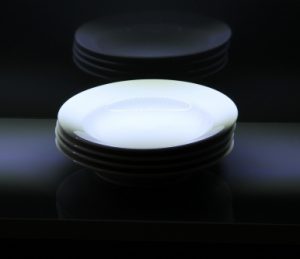History Of Binge Eating Disorders
 The eating disorder that used to be synonymous with compulsive eating, overeating, or emotional eating, binge eating disorder now stands in its own category – and is formally recognized as having a unique set of symptoms.
The eating disorder that used to be synonymous with compulsive eating, overeating, or emotional eating, binge eating disorder now stands in its own category – and is formally recognized as having a unique set of symptoms.
When tracing the history of binge eating disorder, it’s difficult to pinpoint when exactly it became “mainstream,” but research suggests the condition has been around for centuries.
Early references
According to evolutionary psychiatrist Dr. Emily Deans, bulimia, which is closely associated with binge eating behaviors, was first described during the Middle Ages by some individuals in the wealthy class.
Deprivation of food, or fasting, for religious or spiritual reasons was also common in some early cultures, suggesting that disordered eating habits could have been prevalent as early as the 12th and 13th centuries – yet solid references to binge eating disorder in general are lacking.
Introduction to mainstream
During the 1970s and 1980s, anorexia and bulimia received heavy recognition, but it wasn’t until the 1990s that binge eating disorder was first given a formal title as a viable diagnosis, according to an article from Dr. Bridget Engel, Dr. Natalie Reiss and Dr. Mark Dombeck on MentalHelp.net.
In 1992, binge eating disorder was officially introduced to the medical community at the International Eating Disorders Conference, they wrote.
Professional Organizations
Since then, the condition has been recognized by many professional organizations. The Binge Eating Disorder Association (BEDA) was formed in June 2008 by Chevese Turner, a former binge eater and health care professional.
Binge eating disorder is also formally recognized by the National Eating Disorders Association, the National Association of Anorexia, and other organizations like the Mayo Clinic and the American Psychological Association.
Recognition from the DSM
Last year, Binge Eating Disorder was officially included in the Diagnostic Statistical Manual of Mental Disorders, the “bible” of mental health diagnoses for medical and psychiatric professionals.
According to the National Eating Disorder Association, this inclusion supports the idea that BED has a specific set of characteristics and features that make it different from beahviors like compulsive eating or overeating.
Source: NEDA, Psychology Today, BEDA, Mental Help.net<
 Eating Disorder Self Test. Take the EAT-26 self test to see if you might have eating disorder symptoms that might require professional evaluation. All answers are confidential.
Eating Disorder Self Test. Take the EAT-26 self test to see if you might have eating disorder symptoms that might require professional evaluation. All answers are confidential.